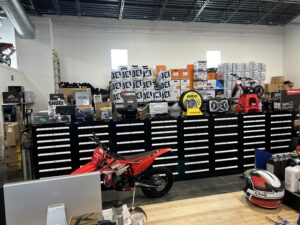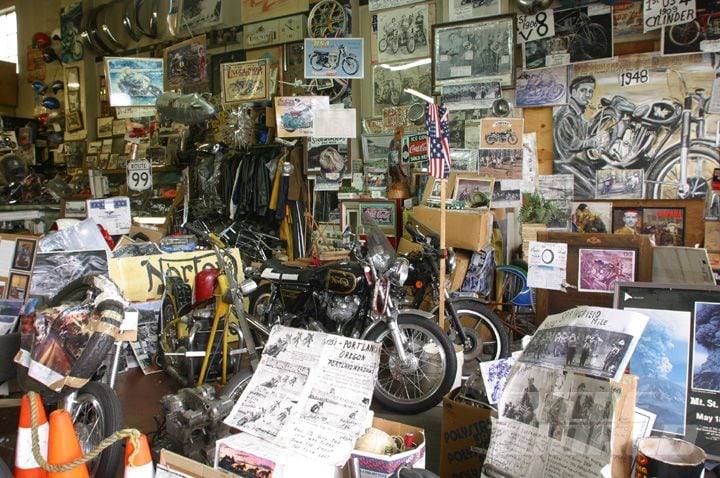Your Go-To Motorbike Shop for Quality Parts and Accessories
Your Go-To Motorbike Shop for Quality Parts and Accessories
Blog Article
Comprehending the Vital Parts of a Bike: A Comprehensive Overview for Lovers
For bike lovers wanting to elevate their riding experience and guarantee their bikes run efficiently, understanding the crucial parts of a motorbike is extremely important. Each component, from the engine's elaborate functions to the crucial function of the braking mechanisms, not just impacts efficiency but likewise security and convenience. This overview will go through the fundamental parts that every rider need to recognize with, allowing informed options in both upkeep and possible upgrades. As we begin this expedition, one must ask: how does each component communicate to produce the seamless ride every enthusiast seeks?
Engine Components

The camshaft plays a crucial function in controlling the timing of the engine's valves, guaranteeing the exact opening and closing required for effective fuel and air consumption, along with exhaust expulsion. This timing is critical to keeping optimum engine performance and effectiveness. Additionally, the carburetor or gas injection system, depending upon the motorbike version, is accountable for blending air with fuel in the correct ratio for burning.
The cooling system, either air or liquid-based, works to maintain the engine's temperature within operational restrictions, stopping getting too hot and guaranteeing durability - motorbike shop. Each part, thoroughly designed and integrated, contributes to the smooth procedure of the engine, specifying the bike's power result and total performance
Transmission System
Integral to the motorcycle's functionality, the transmission system makes sure reliable power transfer from the engine to the wheels. This system consists of a number of crucial parts, consisting of the clutch, gearbox, and last drive, each playing an essential duty in equating the engine's power right into activity. The clutch, generally run by a hand lever, offers to disengage the engine and engage from the transmission, enabling smooth gear modifications and controlled velocity.
The gearbox, usually referred to as the transmission correct, includes a collection of equipments that bikers can by hand move through to change the bike's speed and torque output. These equipments are arranged in a series that enables the bike to increase smoothly and preserve ideal engine efficiency throughout various rates. The majority of motorbikes make use of a sequential gearbox, calling for the cyclist to move gears in an established order.
Braking Devices
While recognizing the transmission system is crucial to harnessing a bike's power, just as essential is the ability to manage and quit that power efficiently, which is where stopping systems enter play. Brakes are essential for security and efficiency, providing the rider with the required control to browse different surfaces and conditions. Commonly, motorbikes include two kinds of braking systems: disc brakes and drum brakes.
Disc brakes are extra common in contemporary motorcycles due to their superior efficiency. This system supplies much better warmth dissipation, constant efficiency, and improved stopping power, especially in wet conditions.
Conversely, drum brakes, though less usual, are still discovered in some bikes. They work by pressing brake shoes versus the internal surface of a drum connected to the wheel. While normally much less effective in warmth dissipation and quiting power, drum brakes are simpler and much more cost-effective.
Recognizing these braking systems' subtleties allows riders to keep their bikes properly and value the engineering that ensures safe and reliable quiting.
Suspension and Guiding
Suspension and steering systems are important elements that significantly affect a bike's handling and trip comfort. The suspension system, including forks at the front and shock absorbers at the rear, absorbs roadway abnormalities, enhancing stability and control. see page Front forks, upside down or commonly telescopic, compress and rebound to minimize impacts, while rear shock absorbers keep tire contact with the roadway, important for grip and safety.
Steering, focused around the handlebars, attaches the motorcyclist to the motorcycle's directional control. The guiding head bearings make certain smooth operation, enabling exact maneuverability. Proper alignment and upkeep of these bearings are vital for foreseeable guiding feedback and decreasing cyclist fatigue.
The suspension's adjustability is another critical element; preload, damping, and rebound setups permit modification to match different riding problems and styles. This versatility is crucial for enhancing efficiency, whether navigating urban streets or taking on sturdy trails. Innovations like electronic shock absorber provide real-time modifications, boosting trip high quality throughout diverse surfaces.

Electric Systems
After guaranteeing a regulated and smooth trip with efficient suspension and guiding systems, attention turns to the electric systems, a critical aspect of modern motorcycles. These systems play an important duty not just in beginning the engine but additionally in powering numerous components that boost the functionality and safety and security of the bike.
At the heart of a motorbike's electric system his explanation is the battery, which stores electric energy essential for beginning the engine and powering supporting systems - moto parts nz. The alternator or generator, paired with the rectifier-regulator, guarantees the battery remains charged while the motorbike functions, transforming mechanical energy into electric power and preserving voltage degrees
The ignition system, an additional vital part, is liable for sparking the air-fuel combination in the engine's cyndrical tubes. Modern bikes commonly make use of an electronic ignition system, supplying greater effectiveness and integrity contrasted to conventional systems.
Lights systems, consisting of headlights, tail lights, and indications, are also essential, ensuring exposure and safety for the rider. Additional news digital components such as sensors, control devices, and presents add to advanced functions like fuel shot administration, anti-lock braking systems (ABS), and electronic dashboards, further improving the riding experience.
Final Thought
A comprehensive comprehension of a motorcycle's essential elements, consisting of the engine, transmission system, braking systems, suspension, steering, and electric systems, is essential for enthusiasts aiming to optimize performance, comfort, and security. Mastery of these elements permits informed choices relating to upkeep and upgrades, inevitably improving the riding experience. By integrating this knowledge, motorcyclists can ensure their motorcycles run at peak effectiveness and reliability, consequently making best use of both enjoyment and longevity of their vehicles.
For bike lovers looking to boost their riding experience and ensure their bikes run efficiently, understanding the important parts of a bike is paramount.Important to the motorcycle's functionality, the transmission system makes sure reliable power transfer from the engine to the wheels.While understanding the transmission system is vital to taking advantage of a motorbike's power, just as essential is the capacity to control and quit that power efficiently, which is where braking devices come into play. Typically, motorcycles feature 2 kinds of stopping systems: disc brakes and drum brakes.
A complete understanding of a motorbike's essential parts, consisting of the engine, transmission system, braking devices, suspension, steering, and electrical systems, is indispensable for enthusiasts aiming to optimize comfort, performance, and safety and security.
Report this page